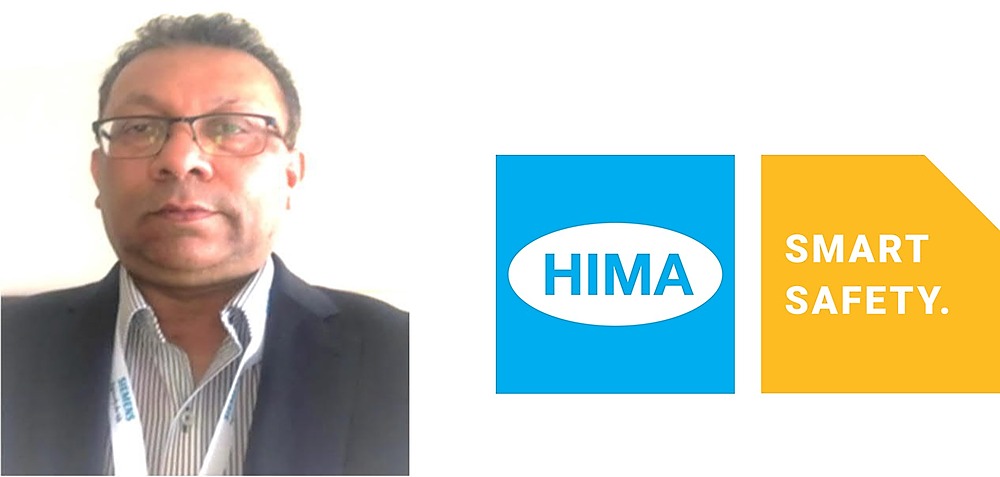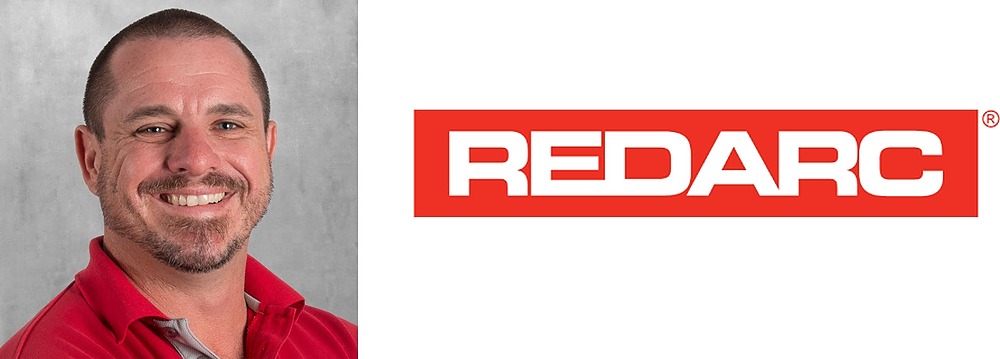IMRt Roundtable | Functional Safety & Safety Integrity Level (SIL)
Event description
Functional Safety & Safety Integrity Level with Expert Presenters!
Technology Park Function Centre - 2 Brodie-Hall Drive WA 6102
(corner of Hayman road)
Functional safety covers an active system that has safety mechanisms in place. These mechanisms are activities or technical solutions to detect, avoid and control these failures or mitigate their harmful effects. Many of these are also achieved by implementing a function, element or other redundant technologies; like built-in sensors in an autonomous robot that detects and avoids objects while moving large items. The safety mechanism is either able to switch or maintain the item in a safe state
Presenters
Austin Osula - Principal Functional Safety, Integrated Operations at Rio Tinto

Austin is an Engineering leader and safety-related systems practitioner with over 10+ years of global experience in developing, implementing, and advising on strategies to mitigate complex technical safety risks on safety-related high integrity systems, production critical operations, and in the delivery and realisation of complex large-scale projects across diverse industry sectors, including rail transportation, petrochemical (oil & gas facilities), utilities, and mining using the international safety standards such as IEC 61508, IEC 61511, 62061, ISO 13849 and CENLEC standards as a guide.
Austin is a professional member with (MIEust) Engineer Australia, Exida Certified Functional Safety Professional (CFSP) and an iESM practitioner. My expertise lies in the areas of hazard identification, risk assessment, safety case development, implementation of functional safety, system safety, process safety, system reliability.
Topic - Misconceptions about Safety Integrity Level (SIL)
SIL is a dependability/reliability measure of the overall safety function performed by the safety related system. There are four SIL levels represented by number, viz. SIL 1, 2, 3, 4. Generally, the higher the SIL number, the better the performance and lower will be PFD/PFH accordingly. SIL are assigned to automated controls based on the residual risk present after taking credit for other risk reduction measures. SIL allocation is a core element of functional safety and only when implemented correctly is effective in preventing or mitigating an undesired event. They are generally various misconceptions about SIL and I intend to focus on three of them:
- SIL can be achieved by a device only;
- SIL 2 is automatically the better choice compared to SIL 1; and
- Meeting the probability of a system failure (PFD or PFH) is sufficient

Rajesh Maharaj - Principal Safety & Risk Engineer at HIMA Australia Pty Ltd
Rajesh Maharaj is a Process Safety and Risk Management Professional with over 27 years of experience in delivering safety in conceptual and engineering design, construction, installation, commissioning, operations and decommissioning of major offshore and onshore Petroleum, Chemicals and Mining Facilities for Chevron, Shell, Sasol, PETRONAS, Woodside and BHP.
He holds a B.Sc. Hons in Chemical Engineering, Masters in Business Leadership (MBL) and is currently a Post grad at HWU, where he has just completed the course component of the Masters in Science in Safety and Risk Management and is currently embarking on the research component focused on “Developing an Integrated Systems Risk-based Approach to Automation and Human Factors with the Process Industry”.
Recent focused papers and communications to corporate leadership committees and seminars for Process Safety Management, HSE MS, Hazard and Effects Management Process and Human Factors Methods
Topic - Automation in the Process Industry - Creating complex human-machine systems
The current trajectory of automation in the hazardous process industry has been driven by an ever-increasing global appetite for greater quantities and varieties of products. These products are produced and delivered within highly competitive and regulated global markets that are value, cost, time, safety and quality constrained. One of the primary responses from the process industry has been the adoption of automation.
The premise being automated systems requires less human intervention, thus minimising human exposure to the dangerous chemicals and harsh remote environments. Further, automated systems are more reliable whereas humans are prone to error and that automated systems are better suited to executing complex and remote steps within timeframes that are impossible for humans to execute.
This automation evolution has placed the human operator on one end of the seesaw (i.e., that which is the source of error, inefficiency, that which is vulnerable and requires protecting from danger) and Automatic Basic Process Control and Safety Instrumented Systems (i.e., that which is capable of consistently executing error free functions, efficiently, in harsh and dangerous environments) at the other end. The result of this zero-sum automation revolution has unfortunately not always resulted in the desired intent i.e., safer, more efficient and reliable operations. In fact, the recent major accident case histories indicate that this approach to safety is having a counter effect and that an alternative approach should be considered and
adopted.
Rajesh presents a brief evolution of automation in the process industry,
highlights some of the symptoms of this necessary fixation, frames the problem and describe what is going on, and then proposes recommended actions. and the symptomatic effects this is having in the industry by using case histories. He then runs through some key recommendations including the adoption of systems engineering principles.
Scott Montgomery - Mining & Industrial Sales Manager at Redarc

Scott has been in the auto electrical industry for over 30 years, starting his auto electrical apprenticeship in the late 1980’s, working in the wholesale and distribution of auto electrical equipment into the heavy machinery industry for 20 years before starting with REDARC in 2015. In February 2020 Scott started the new business pillar for REDARC “Mining and Industrial”
Topic - Functional Safety - Live example of past, present and future
REDARC Electronics: Safety, Sensing, Monitoring, and Power overview
The session will cover the functional explanation of past system and the failings, the examination of the failings and the options that give the system the functional safety required to be specific to Safety, Sensing, Monitoring and Power.
Davoud Nassehi - Chief Technology Officer at S5

Davoud has 21 years of experience of electrical, instrumentation, and control systems engineering in mining, process, and manufacturing industries. Davoud has developed a career path at all E&IC lifecycle phases from Front end engineering to maintenance and de-commissioning in variety of small to large-scale projects and assets.
Davoud is specialized in design, engineering, installation, commissioning, maintenance and troubleshooting of wide range of electrical, control and safety systems in Mining, Mineral processing, Rail and rolling stocks, Oil, Gas & Petrochemical, Energy, FMCG including Pharmaceutical, Food and Beverage, Pipe milling and coating, Iron & Steel industries.
In Australia, Davoud was mainly involved in functional safety, systems engineering, and control systems of mining industry rails and ports infrastructures, Stackers and reclaimers and conveyors, Train Lead-out and Car-dumper control systems, brake-cars, interfacing, interlocking, and commissioning.
Davoud has facilitated several risk assessment workshops using HAZID, HAZOP, SWIFT, WHAT-IF, and other techniques for BHP, Rio Tinto, Oil and GAS and Process Industries. In addition, he has expertise in LOPA, ALARP, SFAIRP, FMECA, SIL Assessment, SIL Verification, and other safety and reliability tools and techniques.
Davoud had a key engineering and SME role in the LNG and Oil & Gas projects in Australia including Inpex Ichthys LNG plant commissioning with leading function checks, functional safety system for Chevron’s Gorgon LNG Project (SIL, SRS, V&V) and Wheatstone upstream Safety code review and rectification
Topic - Functional Safety for Managers
- What does functional Safety mean for managers?
- What do managers need to do for functional safety?
Anyone who deals with machines and process equipment, should have heard of the buzz word of functional safety. But, is it for instrumentation, control and safety experts only? What you as a manager, asset owner, support role, HR, director, project manager, or maintainer should do about that? That's what we will look at in this round table. We will talk about how you can demonstrate your duty of care when you face the "functional safety" topic.
Agenda
8:15 - Meet up & Network Introductions
8:30 - SIRF intro etc
8:45 - Presentation 1 Austin - Rio Tinto (60m)
9:45 - Morning break / Network
10:00 - Presentation 2 - Rajesh - HIMA (60m)
11:05 - Presentation 3 - Scott - Redarc (60m)
12:05 - Lunch / network
1:05 - Presentation 4 - Davoud - S5 (60m)
2:05 - Roundtable Discussion (SIL / Functional Safety)
2:45 - During discussions - Afternoon Break
3:05 - Wrap up for 3:15pm finish
Following each presenter there will be opportunity for questions and round table discussion.
Come along and be part of what will be a great event. This is an opportunity to hear about Functional Safety and relevant aspects, network with your peers and find out what others in the best practice and beyond space are doing.
Roundtable Discussion - We will have the chance to share and be part of discussions on some of the important aspects around Electrical Safety.
Who Should Attend?
SIRF Rt Roundtable Events are for senior and middle management and specialists looking to learn from and discuss with peers the issues they are facing in and around their field of excellence. This Roundtable meeting is likely of interest to Electrical Managers, Electrical Engineers and Electricians. Maintenance and Engineering Managers, Project Managers, Team leaders and Supervisors, Systems and Technology Managers and anyone interested in and involved in Electrical Safety.
About SIRF Roundtable Events
All SIRF Rt events are designed to provide a safe environment for open discussion with peers on the topic of interest they are working on, in and around. Roundtable Events like this one are where we get our name from, and they are organised around a topic or theme. Several speakers will present for between 20 and 45 minutes, with a time period for questions. During the event our expert facilitators will also conduct short roundtable discussions on different aspects or parts of the topic/theme throughout the day. There will be numerous opportunities for networking and sharing best practices. These are our premier local events, so don’t miss out!
FAQs
Dress Code - Smart Casual
When do I need to register by?
Registration typically closes three business days before the event for Roundtable meetings
Investment?
This event is included in SIRF Roundtable membership
Who can I contact for further information?
Western Australia -
Chris Bush 0400 109 861 chris.bush@sirfrt.com
Tickets for good, not greed Humanitix dedicates 100% of profits from booking fees to charity
